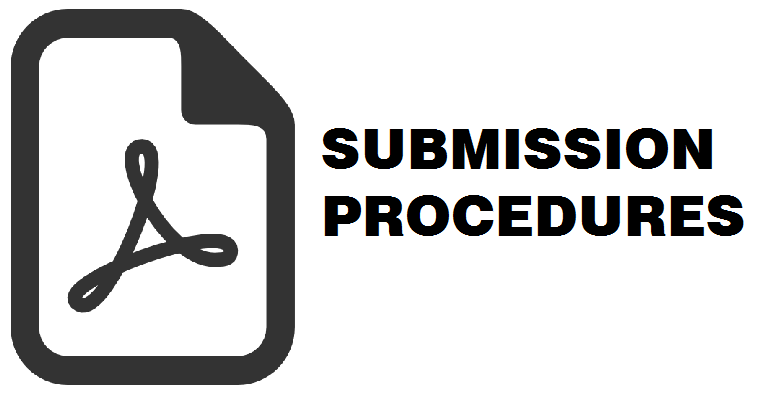Pemantauan Batas Wilayah Berdasarkan Klasifikasi Bentuk Lahan Menggunakan Metode Topographic Position Index
Amelia Fauzana(1), Naufal Setiawan(2*)
(1) Program Studi Teknik Geomatika, Jurusan Teknik Geologi, Fakultas Teknologi Mineral, Universitas Pembangunan Nasional “Veteran” Yogyakarta, Indonesia
(2) Program Studi Teknik Geomatika, Jurusan Teknik Geologi, Fakultas Teknologi Mineral, Universitas Pembangunan Nasional “Veteran” Yogyakarta, Indonesia
(*) Corresponding Author
Abstract
Abstrak. Berkaitan dengan konteks batas intra-nasional, batas intra-nasional memerlukan perhatian khusus dalam pemeliharaan dan pemantauan garis batas, sebagaimana diatur dalam teori boundary making yang mencakup alokasi, delimitasi, demarkasi, dokumentasi, dan pemeliharaan. Namun, di Indonesia belum ada aturan spesifik yang mengatur pemantauan garis batas setelah penetapan, sebagaimana disebutkan dalam Permendagri No. 141 Tahun 2017 tentang batas daerah yang hanya mengatur mekanisme dan kaidah penarikan garis batas. Penelitian ini bertujuan untuk mengetahui potensi metode Topographic Position Index (TPI) dalam mendukung pemeliharaan batas administratif pada skala batas kabupaten menggunakan Digital Elevation Model (DEM) dengan resolusi berbeda, yaitu ALOS AW3D, SRTM V3 Global 1-arcsecond, dan DEMNAS serta untuk mengidentifikasi DEM, metode, dan pendekatan yang tepat. Analisis dilakukan pada segmen batas Kabupaten Magelang–Kabupaten Purworejo dan Kabupaten Magelang–Kabupaten Wonosobo dengan dua Area of Interest (AoI) berbeda berdasarkan luas wilayah dan variasi elevasinya. TPI digunakan untuk mengklasifikasikan bentuk lahan ke dalam 10 kategori berdasarkan nilai topografi dari neighborhood kecil dan besar. Hasil penelitian menunjukkan bahwa tiga kelas utama, yaitu canyons, deeply incised streams; mountain tops, high ridges; dan local ridges, hills in valleys, mendominasi peta klasifikasi dengan lebih dari 20% pada setiap kelas. Uji kesesuaian peta terhadap unsur geografis menunjukkan akurasi lebih dari 89% pada ketiga DEM, meskipun resolusi masing-masing berbeda. Temuan utama penelitian ini menunjukkan bahwa metode TPI mampu memetakan dan memantau garis batas administratif secara kartometrik tanpa memerlukan survei lapangan langsung, sehingga sangat relevan untuk wilayah dengan akses terbatas atau variasi elevasi yang kompleks. Dengan demikian, TPI menawarkan manfaat signifikan dalam mendukung pemeliharaan dan pemantauan batas administratif pada batas alam, serta dapat menjadi solusi praktis dalam mengatasi keterbatasan regulasi terkait pemantauan garis batas di Indonesia.
Abstract. In the context of intra-national boundaries, special attention is required for the maintenance and monitoring of boundary lines, as outlined in the boundary making theory, which includes allocation, delimitation, demarcation, documentation, and maintenance. However, in Indonesia, there is no specific regulation governing the monitoring of boundary lines after their establishment, as mentioned in Permendagri No. 141 of 2017 concerning regional boundaries, which only regulates the mechanisms and principles for drawing boundary lines. This study aims to explore the potential of the Topographic Position Index (TPI) method in supporting the maintenance of administrative boundaries at the district scale using Digital Elevation Models (DEMs) with different resolutions, namely ALOS AW3D, SRTM V3 Global 1-arcsecond, and DEMNAS, as well as to identify the appropriate DEM, method, and approach. The analysis was conducted on boundary segments between Magelang Regency–Purworejo Regency and Magelang Regency–Wonosobo Regency with two different Areas of Interest (AoIs) based on area size and elevation variations. TPI was used to classify landforms into 10 categories based on topographic values from both small and large neighborhoods. The results show that three main classes, namely canyons, deeply incised streams; mountain tops, high ridges; and local ridges, hills in valleys, dominate the classification map with over 20% in each class. The accuracy test of the classification map against geographical features showed more than 89% accuracy for all three DEMs, despite their different resolutions. The main finding of this study shows that the TPI method is capable of mapping and monitoring administrative boundaries cartometrically without the need for direct field surveys, making it highly relevant for areas with limited access or complex elevation variations. Thus, TPI offers significant benefits in supporting the maintenance and monitoring of administrative boundaries, particularly natural boundaries, and can be a practical solution in addressing regulatory limitations related to boundary monitoring in Indonesia.
Submitted: 2024-05-06 Revisions: 2024-12-06 Accepted: 2025-02-15 Published: 2025-02-19
Keywords
Full Text:
PDFReferences
Al-husban, Y. (2019). Landforms Classification of Wadi Al-Mujib Basin in Jordan, based on Topographic Position Index (TPI), and the production of a flood forecasting map. Dirasat, Human and Social Sciences, 44-56. https://doi.org/10.35516/0103-046-003-004
Apriyeni, B. A., Mubarokah, N., & Ramli, M. (2022). Topographic Position Indeks Analisys Untuk Interpretasi Landform Pulau Lombok Berdasarkan Digital Elevation Model (DEM). Geodika: Jurnal Kajian Ilmu dan Pendidikan Geografi, 264-273.
https://doi.org/10.29408/geodika.v6i2.7031
Bashit, N., Prasetyo, Y., Firdaus, H. S., & Amarrohman, F. J. (2019). Penetapan Batas Desa Secara Kartometrik Menggunakan Citra Quickbird. Jurnal Pasopati, 9-15.
BIG. (2018). Tanah Air Indonesia. Diambil kembali dari Seamless Digital Elevation Model (DEM) dan Batimetri Nasional: https://tanahair.indonesia.go.id/demnas/#/
Bufalini, M., Materazzi, M., Amicis, M. D., & Pambianchi, G. (2021). From traditional to modern 'full coverage' geomorphological mapping: a study case in the Chienti river basin (Marche region, central Italy). JOURNAL OF MAPS, 17-38.
https://doi.org/10.1080/17445647.2021.1904020
Dinas Energi dan Sumber Daya Mineral. (2022). Peta Geologi Kabupaten Magelang. Retrieved from Portal Data Pemerintah Provinsi Jawa Tengah: https://data.jatengprov.go.id/dataset/peta-geologi-kabupaten-magelang.
Hidayat, F., Munawaroh, & Rachma, T. R. (2021). Tipologi batas wilayah administrasi untuk memudahkan pengelolaan batas daerah di Indonesia. Majalah Geografi Indonesia, 112-122. https://doi.org/10.22146/mgi.61791
Hidayat, P. I., Subiyanto, S., & Sasmito, B. (2016). Analisis Kualitas DEM Dengan Membandingkan Metode Orthorektifikasi Memakai Citra Resolusi Tinggi (Studi Kasus: Kecamatan Limbangan, Kabupaten Kendal, Jawa Tengah). Jurnal Geodesi Undip, 22-31.
JAXA. (2024, 2 26). Eearth-graphy. Retrieved from Precise Global Digital 3D Map "ALOS World 3D" (AW3D): https://earth.jaxa.jp/en/data/2552/index.html
Jennes, J. (2006). Topography Position Index TPI Landform Slope Classification Standardization Neighborhood Statistics. Amerika Serikat.
Kemendagri. (2013). Peraturan Menteri Dalam Negeri Republik Indonesia (Permendagri) Nomor 15 Tahun 2013 Tentang Batas Daerah Kabupaten Magelang Dengan Kabupaten Purworejo Provinsi Jawa Tengah. Indonesia: Jaringan Dokumentasi dan Informasi Hukum Nasional.
Kemendagri. (2013). Peraturan Menteri Dalam Negeri Republik Indonesia (Permendagri) Nomor 8 Tahun 2013 Tentang Batas Daerah Kabupaten Magelang Dengan Kabupaten Wonosobo Provinsi Jawa Tengah. Indonesia: Jaringan Dokumentasi dan Informasi Hukum Nasional.
Kemendagri. (2017). Peraturan Menteri Dalam Negeri Republik Indonesia (Permendagri) Nomor 141 Tahun 2017 Tentang Penegasan Batas Daerah. Indonesia: Jaringan Dokumentasi dan Informasi Hukum Nasional.
Muddarisna, N., Yuniwati, E. D., Masruroh, H., & Oktaviansyah, A. R. (2020). An Automated Approach using Topographic Position Index (TPI) for Landform Mapping (Case Study: Gede Watershed, Malang Regency, East Java, Indonesia). IOP Conference Series: Earth and Environmental Science (pp. 1-6). San Francisco: IOP Publishing Ltd.https://doi.org/10.1088/1755-1315/412/1/012027
Pinther, M., Robertson, W. A., Shoshanty, M., Shrestha, B. N., & Srebro, H. (2013). International Boundary Making. Copenhagen, Denmark: International Federation of Surveyors.
Polidori, L., & Hage, M. E. (2020). Digital Elevation Model Quality Assessment Methods: A Critical Review. Multidisciplinary Digital Publishing Institute, 1-36.
https://doi.org/10.3390/rs12213522
Reuter, H. I., & Nelson, A. (2009). Geomorphometry in ESRI Packages. Amerika: Environmental Systems Research Institute. https://doi.org/10.1016/S0166-2481(08)00011-1
Susetyo, D. B., Hidayat, F., Rachma, T. R., Oktaviani, N., & Nashiha, M. (2017). Analisis Kedetailan Peta Rupabumi Indonesia Multi-Skala. Seminar Nasional Geomatika (pp. 551-559). Indonesia: Badan Informasi Geospasial. https://doi.org/10.24895/SNG.2017.2-0.453
Sutanta, H., & Tiera, A. (2019). Calculation of the number of peaks in The Gunung Sewu area using DEMNAS, focal maximum function and slope position classification method. Geomatics International Conference (pp. 1-12). Indonesia: IOP Publishing.
https://doi.org/10.1088/1755-1315/389/1/012052
Sutanto, T. P., & Fitria, N. (2017). Klasifikasi Bentuklahan Secara Otomatis Menggunakan Topographic Position Index . Jurnal Geografi, 75-83.
Trentin, R., & Robaina, L. E. (2018). Study Of The Landforms Of The Ibicuí River Basin With Use Of Topographic Position Index. Revista Brasileira de Geomorfologia, 423-431. https://doi.org/10.20502/rbg.v19i2.1383
USGS. (2018, 7 30). USGS EROS Archive - Digital Elevation - Shuttle Radar Topography Mission (SRTM) 1 Arc-Second Global. Retrieved from USGS: https://www.usgs.gov/centers/eros/science/usgs-eros-archive-digital-elevation-shuttle-radar-topography-mission-srtm-1.
Weiss, A. D. (2001). Topographic Position and Landforms Analysis Andrew D. Weiss, The Nature Conservancy. Ecoregional Data Management Team The Nature Conservancy, Northwest Division.
Wibowo, T. W., Ambhika, N., & Pratama, A. P. (2019). Teknik Geovisualisasi Untuk Percepatan Pemetaan Batas Desa Di Daerah Berbukit. Majalah Ilmiah Globe, 35-44.
https://doi.org/10.24895/MIG.2019.21-1.908
Zufrimar, & Zainal, E. (2023). Perbandingan Elevasi Dasar Sungai Berdasarkan Hasil Analisis Pada DEM Drone, DEMNAS dan DEM SRTM . Sigma Teknika, 471-478.
https://doi.org/10.33373/sigmateknika.v6i2.5704
Article Metrics
Refbacks
- There are currently no refbacks.
Copyright (c) 2025 Author and Majalah Geografi Indonesia

This work is licensed under a Creative Commons Attribution-ShareAlike 4.0 International License.
Volume 35 No 2 the Year 2021 for Volume 39 No 1 the Year 2025
ISSN 0215-1790 (print) ISSN 2540-945X (online)









